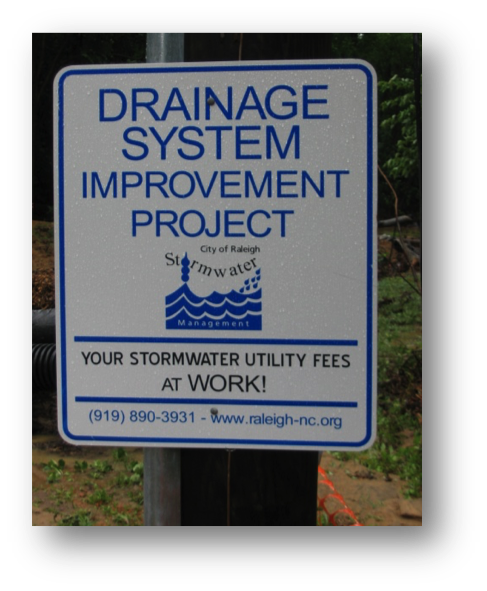Building Public Support
Fostering community consensus and support regarding the need for an enhanced stormwater program and a long-term funding mechanism is an integral part of the overall process and is often the difference between success and failure when considering the potential implementation of a new utility and fee. Particularly in New Jersey, where the authority to charge such fees is new to the public, early adopters of the stormwater utility fee model are likely to experience some headwinds along the path to fee implementation. Therefore, it’s imperative that communities consider the development and execution of a robust public involvement and outreach plan that spans the entire lifecycle of the implementation effort – before, during, and after stormwater utility bills are sent to customers.
Prior to Implementation
A common mistake that many communities make during the process of implementing a stormwater utility is the rush to discuss the fee with elected officials. The messaging may be, “it’s just $4 per month” or “it’s just the cost of your morning Starbucks.” Regardless of what the final rate is, the public will first want to understand the program and benefits before they are willing to pay for it. Across the country, public support is achieved most successfully through a public stakeholder engagement process, such as the formation of a stakeholder committee to serve as a sounding board and/or to provide feedback on programmatic decisions. The goal of the public stakeholder process should be to establish the need and desire for an increased level of service (LOS) for the stormwater system and management program, define its components and goals, and determine how to fund the desired program.
It is critical that the stakeholder committee represent a cross section of the customers that could be served, by a stormwater utility program, particularly those that may be most impacted by any change in funding strategy. While it is important to involve willing participants, it is often necessary to recruit specific representatives from the community that represent various community, business and environmental interests. Also, it is important to see representation from non-profits or tax-exempt organizations, particularly religious-affiliated organizations that do not currently pay property taxes but who would be required to pay a stormwater fee if implemented. These individuals may be nominated at the staff level or potentially identified by local officials. The table at the right shows a list of typical participants in a stakeholder process. The size of the stakeholder committee may vary based on the size of the locality.
List of Potential Stakeholder Committee Members
Hospital
Major Commercial Employer
Major Industrial Employer
Major Mall
School District
College
Churches
Homeowners Association
Environmental Group
Chamber of Commerce
Real Estate Company
Apartment Management Group
Citizen Advocate
Once a stakeholder committee is formed, it is very important to educate the members about stormwater issues and utilities, and then seek feedback in a controlled, facilitated forum. The tabs below hold a typical list of stakeholder meetings and topics. These meetings are deliberately organized to discuss level of service issues and stormwater management benefits before funding is addressed. The public needs to know what programs they are being asked to fund and what benefits they will be receiving before they are willing to pay for it.
Potential Stakeholder Committee Meetings & Topics
Click each meeting to read the topics
- Introduction to Stormwater
- Existing Program Issues
- Program Needs and Priorities
Take committee members on a field trip to show them stormwater issues in the community, and stormwater management benefits.
- Existing and Future Stormwater Levels of Service
- Level of Service Costs
- Feedback on Level of Service Preferences
- Funding Options
- Rate Structures
- Policy Issues
- Rate Structures
- Policy Issues
- Financial Alternatives
- Adjustment Policy Issues
- Rate Recommendations
- Implementation
- Development of Initial Recommendations
- Final Recommendations
- Discussion of Presentation to Commission
During Implementation

Once the decision to implement the stormwater utility and fee is made by the local government, the public outreach process begins. Public outreach involves broad dissemination of information regarding the benefits and details about the stormwater utility and associated fee. Key information to share typically includes education on the needs and benefits of the program, estimated fees for different customer classes and a timeline for implementation. Effective outreach strategies include the development of information flyers to share at community events, publication in local newspapers or social media platforms, an information website for details and updates, direct mail, billing inserts and public meetings. For your largest fee payers, individual mailing notifications (with an estimate of the proposed fee) should be provided so that these businesses can include the cost in their budgets. The goals of this process should be to touch all citizens at least once or twice with salient information to avoid the inevitable push back that “you didn’t tell me this was coming.” The first time that customers hear about the fee should not be when they receive their initial billing.
Post Implementation
The public outreach process should not end after a utility and fee are implemented. Because this program likely represents a significant change in your community, it’s vital to continue to report out the benefits of the program to the public to continue to earn their trust and support. Examples of post-implementation public outreach includes annual reports to local officials on program accomplishments (such as service improvements and projects completed), posting of such information on the city/county website and changes to maintenance signage noting that the project and activities are paid for with stormwater utility funding.
For a detailed look at a community that successfully built public support, see the City of Lancaster case study.
For further information and resources on building public support, check out “When a bandaid’s not enough” by American Rivers.
For a better understand of New Jersey New Jersey Opinions on the State of Our Water Systems, the Environment and Infrastructure, click here.
